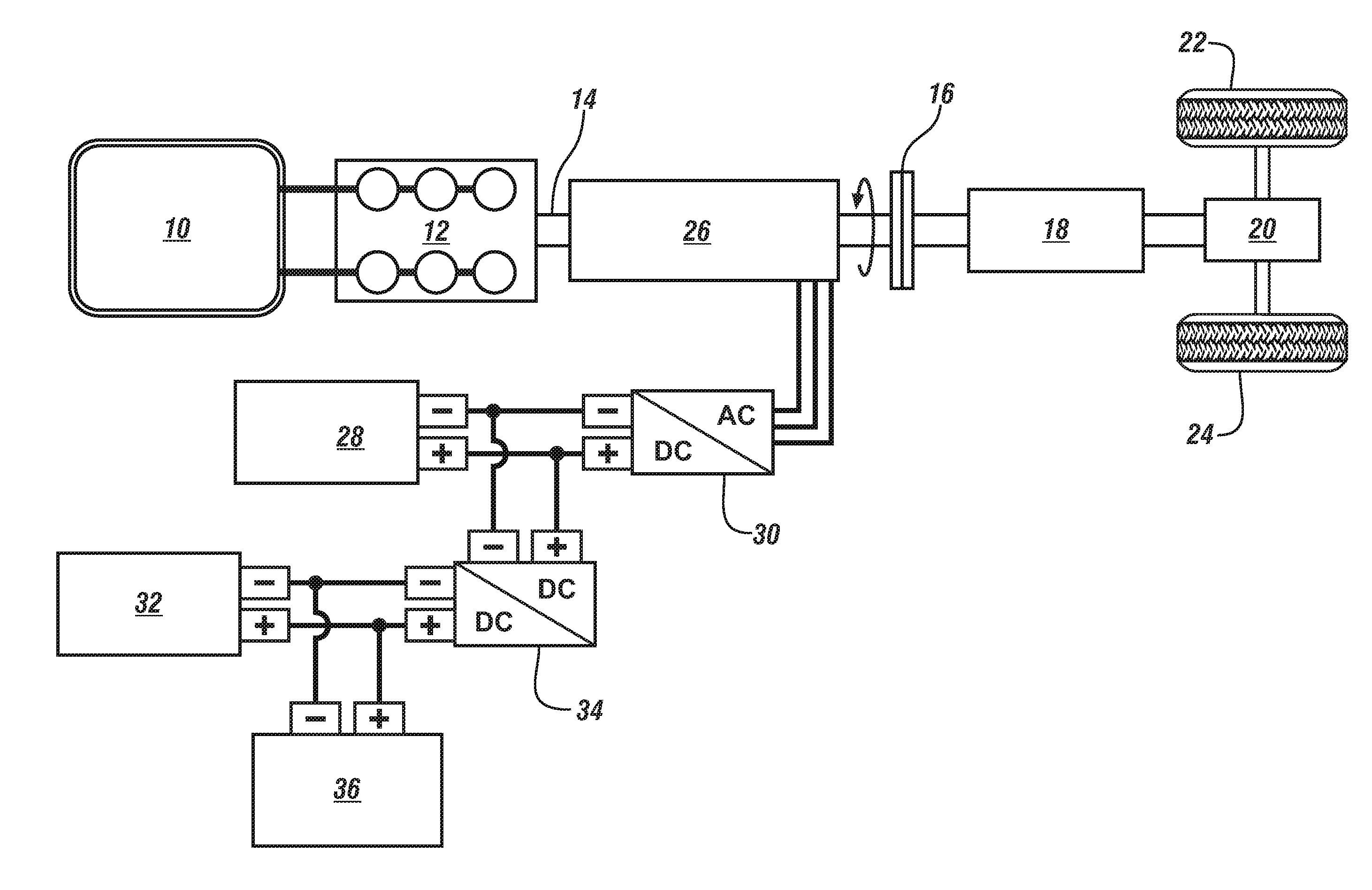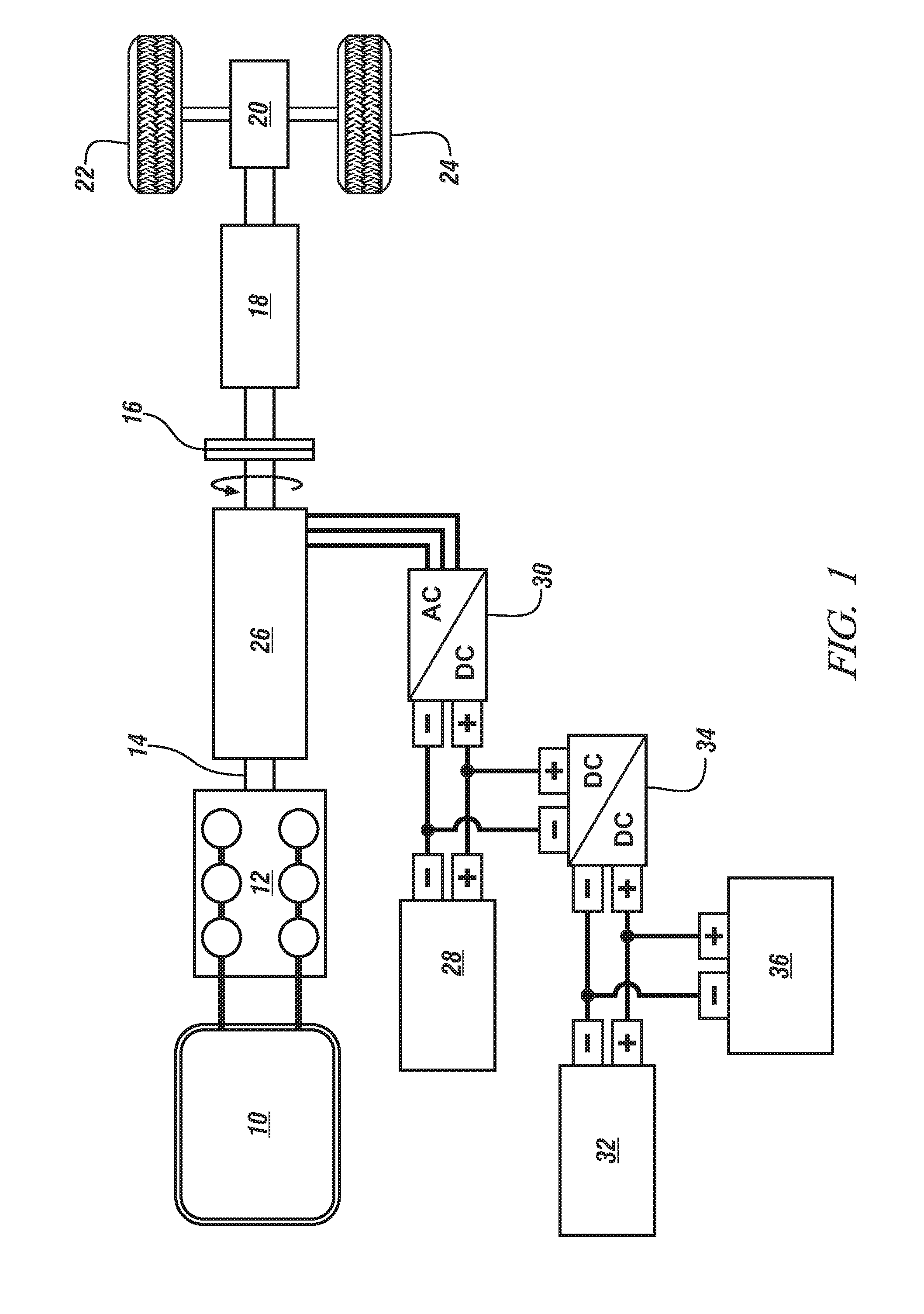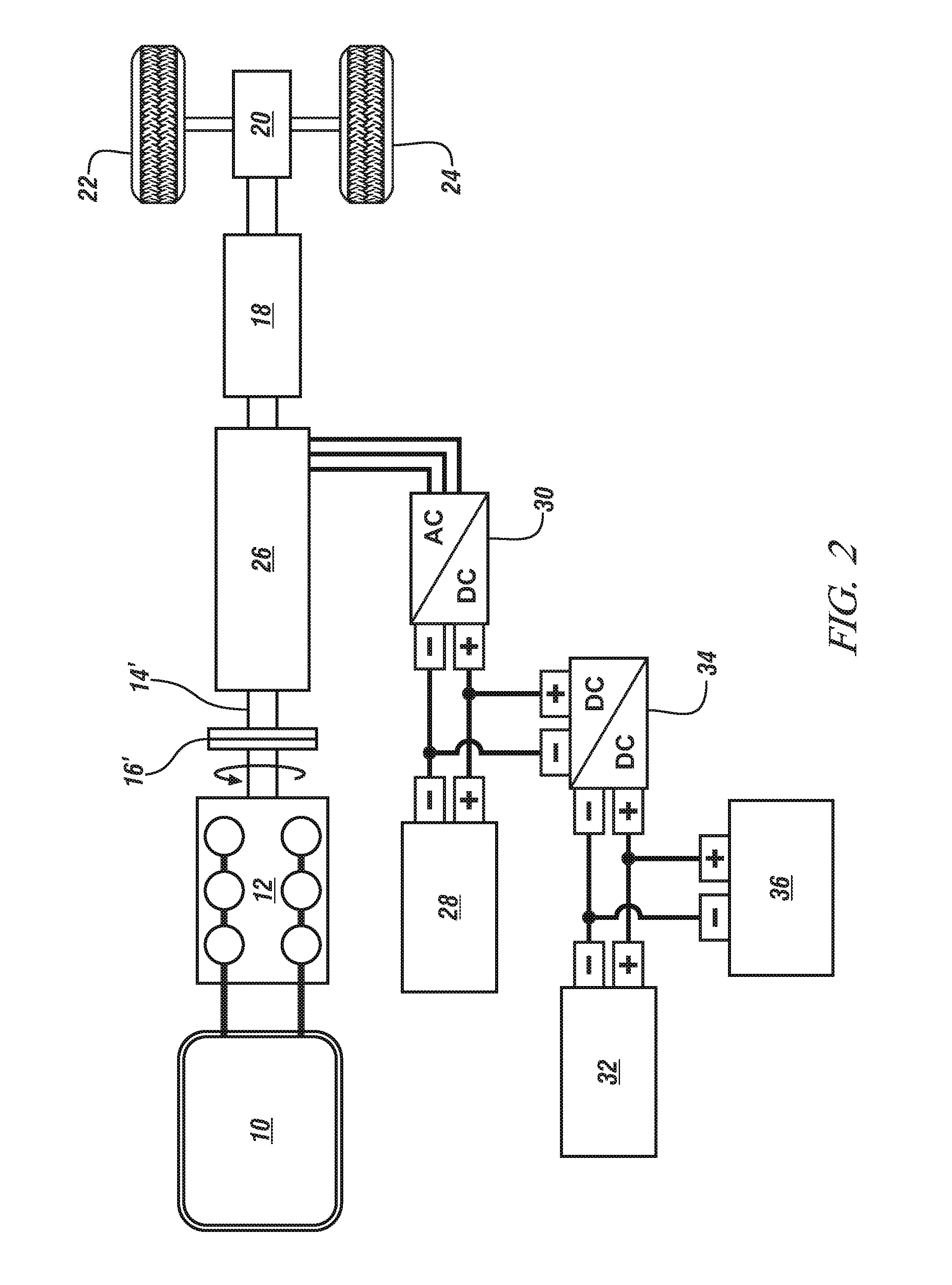Li-ION BATTERY FOR VEHICLES WITH ENGINE START-STOP OPERATIONS
a technology of li-ion batteries and engine start-stop operations, which is applied in the direction of battery/fuel cell control arrangement, cell components, instruments, etc., can solve the problems of significantly reduced unsuitable acid batteries, so as to reduce the consumption of vehicle fuel, reduce the cycle life of lead acid sli batteries, and high power
- Summary
- Abstract
- Description
- Claims
- Application Information
AI Technical Summary
Benefits of technology
Problems solved by technology
Method used
Image
Examples
Embodiment Construction
[0017]This invention uses a lithium-ion battery electrode materials combination specifically adapted for repeated starting of an internal combustion engine on a vehicle when the engine is to be operated in a start-stop mode of engine operation. Such engines typically comprise several pistons (e.g., 4, 6, or 8) connected to a crankshaft for reciprocation in cylinders of the engine. A metered charge of hydrocarbon fuel (gasoline, sometimes containing alcohol, or diesel fuel) and a controlled amount of air are introduced in a specified sequence into the cylinders of the engine. The inducted air-fuel mixture is compressed by piston action in each cylinder and ignited by a spark or by compression to drive the respective pistons and the crankshaft to which they are connected. In order to start such an engine, its crankshaft and connecting pistons must be turned using a starter motor in order to start air-fuel induction and the ignition / combustion process.
[0018]In accordance with this inve...
PUM
 Login to View More
Login to View More Abstract
Description
Claims
Application Information
 Login to View More
Login to View More - R&D
- Intellectual Property
- Life Sciences
- Materials
- Tech Scout
- Unparalleled Data Quality
- Higher Quality Content
- 60% Fewer Hallucinations
Browse by: Latest US Patents, China's latest patents, Technical Efficacy Thesaurus, Application Domain, Technology Topic, Popular Technical Reports.
© 2025 PatSnap. All rights reserved.Legal|Privacy policy|Modern Slavery Act Transparency Statement|Sitemap|About US| Contact US: help@patsnap.com



